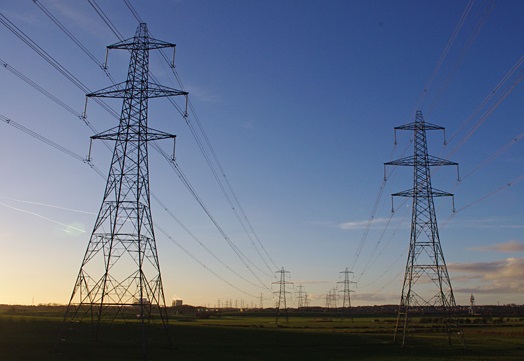By Romany Webb
On Friday, March 19, Columbia Law School’s Sabin Center for Climate Change Law joined the City of New York, Environmental Defense Fund, and Natural Resources Defense Council in petitioning the New York Public Service Commission (NYPSC) to do more to prepare for the impacts of climate change on the state’s utility systems. The petition requests that the NYPSC “direct every major utility in the state—electric, gas, water, and telecommunications—to conduct a climate vulnerability study.” As part of the study, each utility would identify where and under what conditions their assets and operations are at risk from the impacts of climate change, and evaluate options to mitigate those risks. That information is vital to enable utilities to design and operate systems that can deliver safe and reliable services in the age of climate change
The widespread electricity, natural gas, and water outages in Texas in February, following Winter Storm Uri, were a stark reminder of the vulnerability of utility systems to extreme weather events which are expected to become more frequent and severe due to climate change. Other climate impacts could also affect the operation of utility systems, often in multiple, compounding ways. In the electricity sector, for example, studies show that the higher temperatures associated with climate change will both increase demand for electricity and reduce the operating efficiency (and thus output) of thermoelectric generating plants. A real-world example of this occurred in California last August, when a multi-day heat wave led to above average demand for electricity (primarily due to increased use of air conditioners), while also forcing a reduction in output from natural gas generators. In the California case, hydroelectric generation was also lower than normal due to a prolonged drought, solar facilities were affected by clouds from a storm, and wildfires were threatening major transmission lines. The combined result was two days of grid operator-ordered rolling blackouts. (For a full discussion of the California outages, see our previous blog here.)
Despite these experiences, most electric and other utilities are yet to integrate climate considerations into their system planning and decision-making, leaving them and their customers at significant risk. As explained in the petition filed with the NYPSC, “New York utility systems are largely designed to provide safe and adequate service based on historical weather patterns and load trends.” Moving forward, “utility infrastructure must adapt to changing weather patterns in New York including higher average temperatures, longer heatwaves, changes in precipitation, sea level rise and increased coastal storms. In order to design and upgrade systems in ways that will withstand these variables, it is critical that utilities integrate forward climate projections into their system planning.” However, most utilities still base their planning on historic data, which does not account for climate change. To the extent utilities have considered climate change, they have often done so in a piecemeal way, focusing on just one or a few climate impacts (e.g., storms) while ignoring others, or only looking at specific types of facilities (e.g., pipelines) rather than their entire system. (These problems were discussed in the context of electric system planning in our December 2020 report on Climate Risk in the Electricity Sector.)
One notable exception is Con Edison which undertook a comprehensive climate vulnerability study following Superstorm Sandy. As previously reported on this blog, Con Edison agreed to conduct the study after the Sabin Center and other groups intervened in its 2013 rate case, and pressed it to develop a comprehensive plan to manage the impacts of climate change on its systems. In approving the study, the NYPSC said:
The State’s utilities should familiarize themselves with scientists projections for local climate change impacts on each service territory . . . We expect the utilities to consult the most current data to evaluate the climate impacts anticipated in their regions over the next years and decades, and to integrate these considerations into their system planning and construction forecasts and budgets.
More than seven years later, most utilities are still yet to do that. It is time for the NYPSC to follow-up and require them to act.
Read the petition filed with the NYPSC here.
In 2012, shortly after Hurricane Sandy, the Sabin Center took the lead in filing a similar petition with the PSC, posted here. That helped lead to Con Edison’s preparation of its Climate Change Vulnerability Study, posted here, which advanced the global state of the art in utility preparedness for climate change impacts. However, few other utilities have followed this lead. In December 2020 the Sabin Center and EDF published this study, “Climate Risk in the Electricity Sector: Legal Obligations to Advance Climate Resilience Planning by Electric Utilities.”
This is test biographical description.


